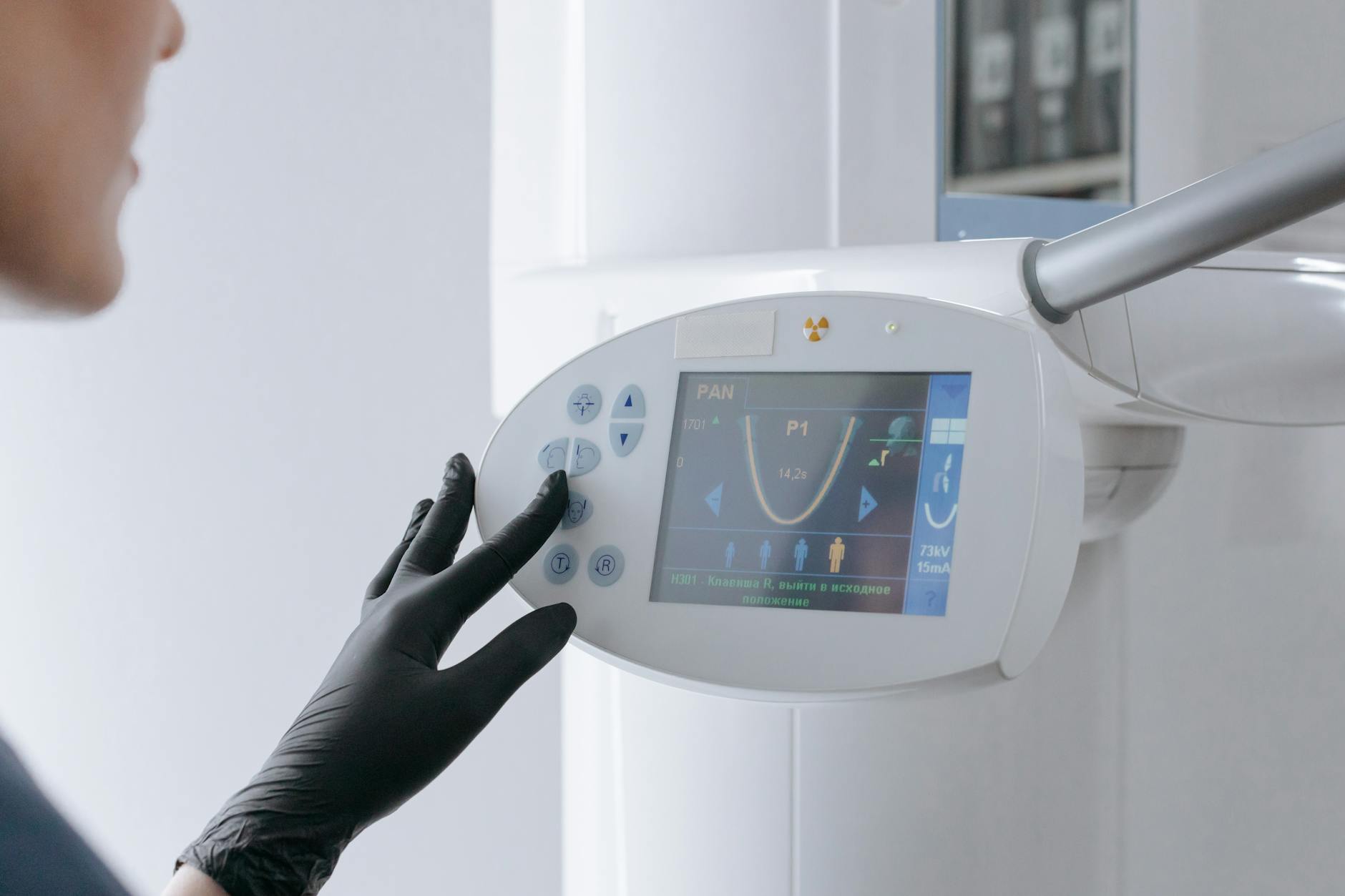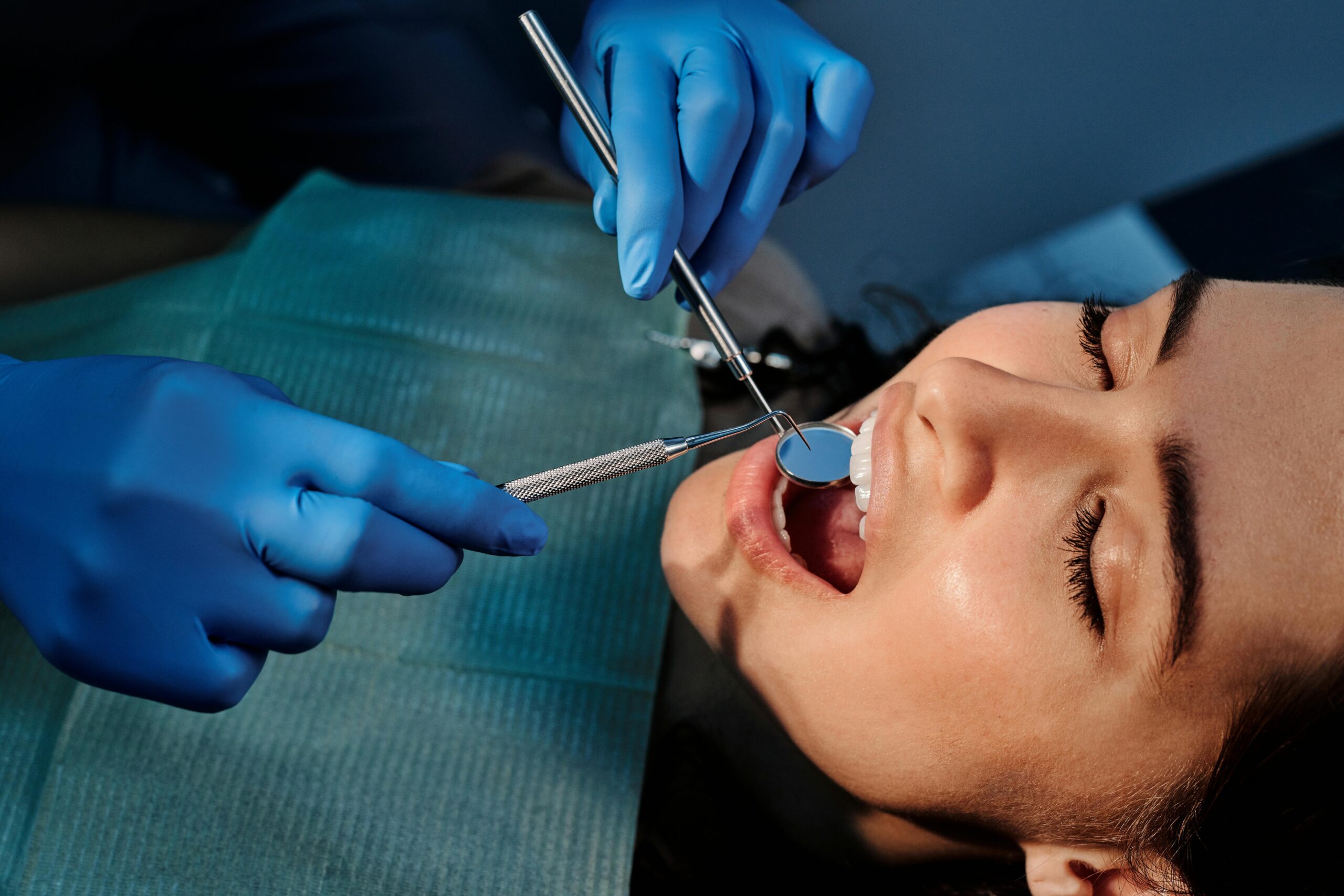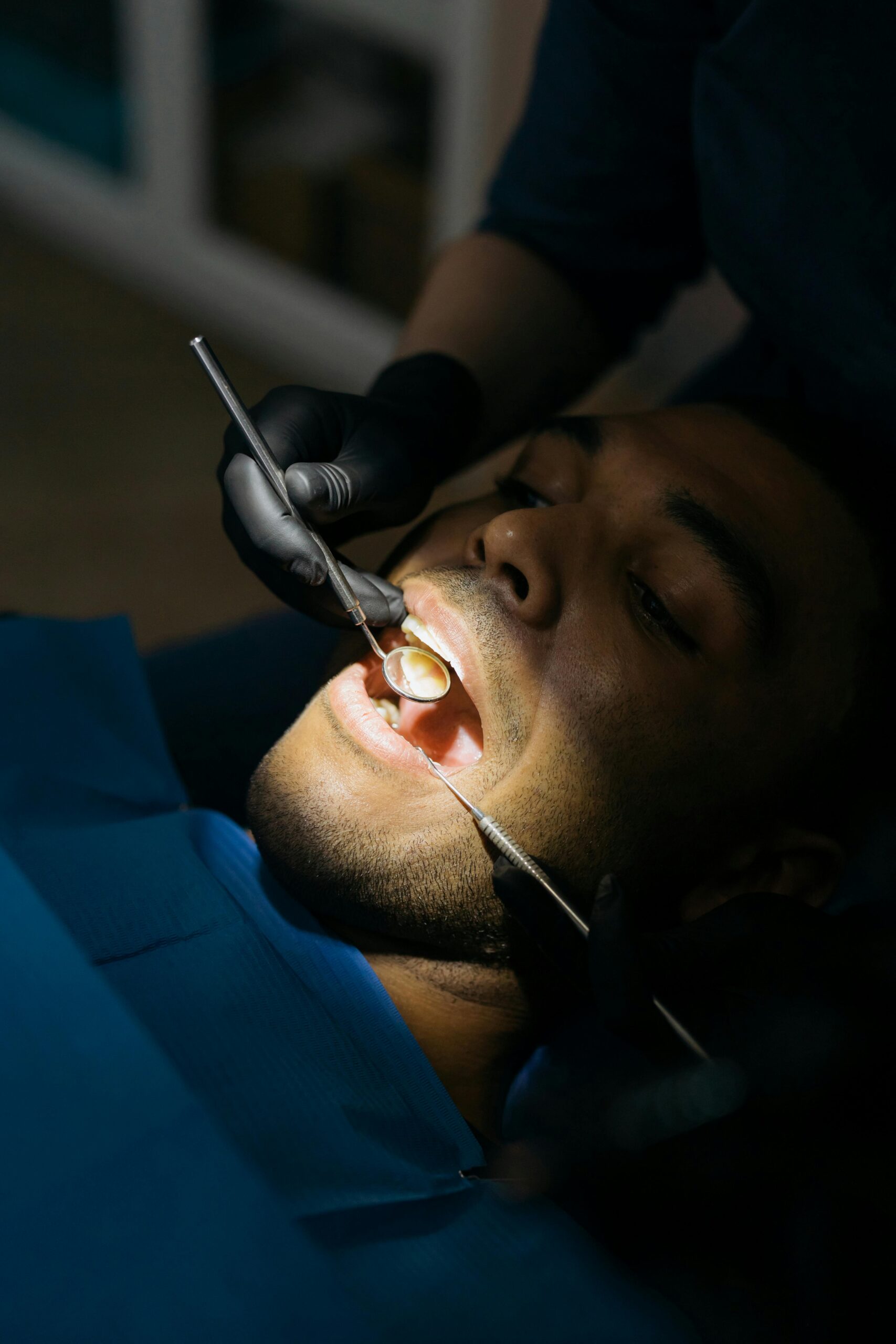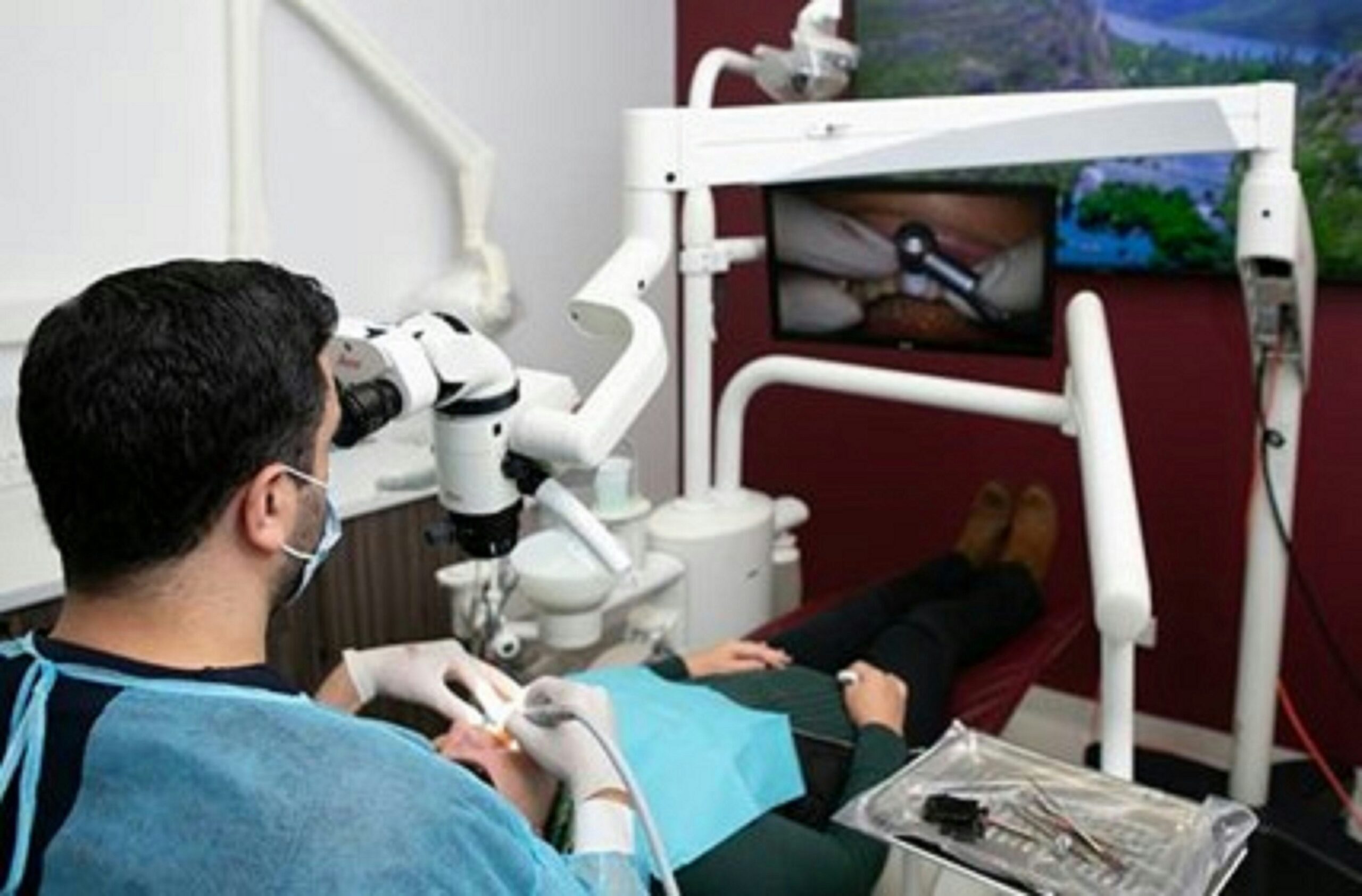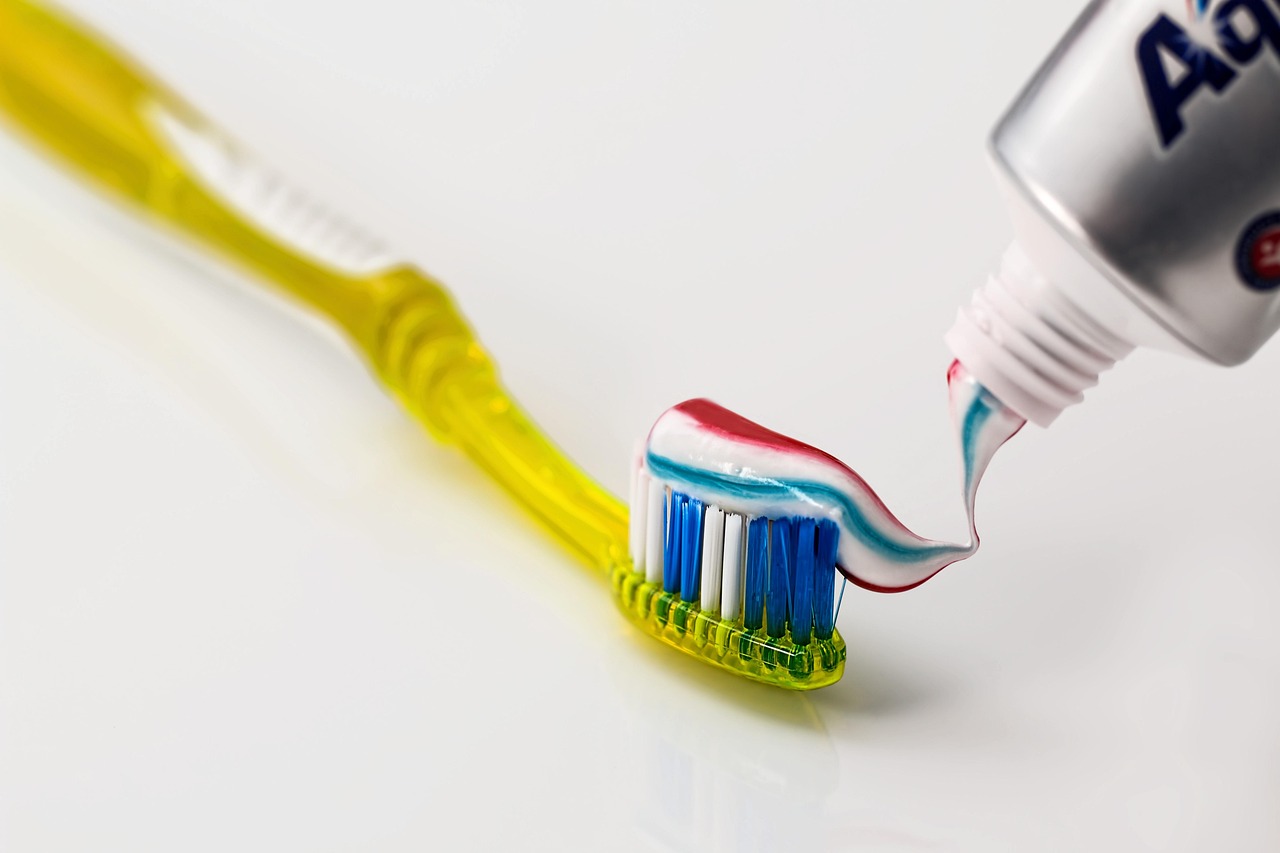Understanding BPA in Dental Materials
Bisphenol A (BPA) is a building block used to make some plastics and resins. In dentistry, BPA itself is rarely the main ingredient, but some resin-based materials are made from BPA-related molecules. Questions about bpa exposure dental materials usually center on sealants and tooth-colored fillings because they are resin-based. Knowing where BPA can appear helps you and your dentist make informed choices.
Research shows resin-based sealants and composites can release very small amounts of BPA or related monomers during placement and shortly after; these amounts tend to decrease as the material fully sets and is finished [1]. Some materials may also elute BPA “analogues” (such as BPS), and scientists continue to study how these chemicals interact with cells and whether they matter at the doses found clinically [2]. If you need a tooth-colored repair, options like tooth-colored fillings and dental bonding are common because they are conservative and blend with natural teeth.
- Where BPA comes from: trace residues or breakdown of BPA-derived resins.
- When release happens: mainly during placement and early after curing.
- What affects it: material chemistry, curing quality, finishing, and saliva contact.
- How dentists limit it: careful isolation, thorough light-curing, rinse and polish.
- Alternatives: glass ionomer cements and ceramics contain no BPA.
For most people, the amounts measured from dental procedures are small and short-lived, while the benefits of treating decay and sealing grooves are clear [1]. If you prefer to avoid resins in certain cases, ask about glass ionomer fillings or full-coverage options like ceramic crowns and bridges. We can discuss which materials fit your tooth, your health goals, and the evidence we have today.
Why BPA Exposure Matters
BPA (bisphenol A) can act like a weak hormone in the body, so even small, brief exposures draw attention. In dentistry, trace amounts can come from some resin-based sealants and fillings during placement. For most people these amounts are low and short-lived, but it is reasonable to understand them and choose steps that reduce exposure. This is especially true if you are pregnant, nursing, caring for a child, or you simply prefer the most cautious approach.
Context matters. Daily life already includes potential BPA contact from sources like food packaging and receipts; dental exposures, when they occur, are typically short and happen mainly at the time of curing and finishing. Good technique—dry isolation, curing as directed, and careful polishing—helps lock the material, remove the thin surface layer of unreacted resin, and limit what reaches saliva. After a procedure, a thorough water rinse is a simple extra step that can further reduce contact.
If you want to avoid BPA-related resins when possible, tell your dentist your preferences and ask where alternatives make sense. Glass ionomer cements and ceramic restorations do not contain BPA, and they are useful in select situations. Sometimes a plan blends approaches: for example, using a non-resin material in baby teeth with shallow cavities, or reserving resin only where strength and bonding are essential. The goal is to treat disease effectively while respecting your comfort level.
Dentists can further minimize potential exposure by using high-volume suction during placement, placing a glycerin gel barrier before the final light cure to reduce the oxygen-inhibited layer, finishing and polishing immediately, and rinsing well. At home, you do not need to do anything special beyond normal brushing and avoiding chewing on very hard foods on a fresh filling for the first day. Clear communication about materials and technique allows us to balance the proven benefits of sealing grooves and restoring decayed teeth with thoughtful risk reduction. If you have questions about bpa exposure dental materials, bring them up—we are glad to walk through options and evidence with you.
Establishing Safe Dental Practices
Safe dental practice means choosing materials and techniques that lower any possible contact with trace chemicals while still treating the tooth well. In the chair, potential exposure—if it occurs—happens mainly while placing and finishing resin-based sealants or fillings, so we focus on those minutes. With careful isolation, thorough light-curing, immediate finishing, and a generous water rinse, contact with saliva can be minimized. Questions about bpa exposure dental materials often lead to practical, commonsense steps like these.
Before treatment, we discuss material choices that fit your tooth and goals. When appropriate, we may consider non–BPA-based options such as glass ionomer cements for certain cavities or temporary needs, or ceramic restorations for longer-term solutions. During placement of any resin, we keep the area dry with a rubber dam or cotton isolation and use high‑volume suction so uncured residue is removed rather than swallowed. A glycerin gel barrier before the final light cure helps reduce the oxygen‑inhibited surface layer, and immediate polishing plus a thorough water rinse further limit what can dissolve into saliva.
Special situations deserve extra care. For young children receiving sealants, we aim for efficient placement, strong suction, and a final rinse. If you are pregnant or nursing, we can discuss timing, material choices, and whether a non-resin alternative is sensible for a given tooth. At home after resin placement, normal brushing and flossing are fine; avoiding very hard chewing on a fresh filling the first day protects the restoration as it reaches full strength. If sensitivity or a “high spot” develops, a quick adjustment visit helps comfort and reduces unnecessary wear.
When esthetics are the goal, ceramic options avoid resin altogether in the final restoration. Examples include all‑ceramic crowns, inlays/onlays, and conservative cosmetic choices like porcelain veneers, which contain no BPA. Whatever we place, we are transparent about the material used and technique steps taken, and we are happy to share safety data sheets on request.
If you want to plan a visit or ask about materials before scheduling, check our current hours. Clear communication helps us tailor care that controls risk while effectively treating decay, protecting enamel, and restoring function.
Alternatives to BPA-Containing Materials
Yes—there are several dental materials that do not contain BPA. Common choices include glass ionomer cements, resin‑modified glass ionomers, all‑ceramic restorations (porcelain or zirconia), stainless steel crowns for children, and metal alloys. Some resin composites are made without Bis‑GMA/BPA derivatives as well. The best option depends on where the tooth is, how much it chews, moisture control, and your esthetic goals.
Glass ionomer cements are BPA‑free and set by an acid–base reaction, not by resin chemistry. They bond to tooth structure, release fluoride, and are useful for small cavities in baby teeth, root surfaces, and interim repairs. Their trade‑off is lower wear resistance, so they are often placed where bite forces are modest or used as a base under another material. Resin‑modified glass ionomers add a small resin component to improve strength and moisture tolerance, yet they remain different from typical composite resins in chemistry and handling.
Ceramic restorations—such as inlays, onlays, crowns, and veneers—contain no BPA in the ceramic itself. They are strong, long‑lasting, and highly esthetic, making them good choices for larger cracks or heavily damaged teeth. Ceramics may be bonded or cemented; the adhesive cement can include methacrylate resin, so careful cleanup, thorough curing, and polishing help keep any contact with uncured residue low. When the goal is to avoid resin in the final restoration, full‑coverage ceramics achieve that while restoring normal function and appearance.
For children with deep decay on baby molars, preformed stainless steel crowns are a durable, BPA‑free option that quickly protects the tooth. Amalgam (a metal alloy) is also BPA‑free and can be considered in select back‑tooth situations, though many families prefer tooth‑colored alternatives. When a bonded, tooth‑colored repair is needed, some composites are formulated without Bis‑GMA/BPA derivatives; they can be discussed as part of a cautious plan to reduce potential bpa exposure dental materials while still meeting strength and esthetic needs.
Choosing among these options means balancing cavity size, bite force, moisture, esthetics, and longevity. We are happy to explain the material’s makeup, why it fits your tooth, and what steps we take during placement to limit any trace chemical contact. Together, we can match the evidence, your preferences, and the clinical situation to reach a comfortable, effective solution.
Adhesives: Reducing BPA Use
Adhesives are the thin, liquid resins dentists use to bond sealants, fillings, and ceramic restorations to tooth enamel and dentin. We can reduce BPA use by choosing systems made without BPA‑derived monomers when appropriate, and by following placement steps that limit any contact with uncured resin. These choices help maintain strong bonds while keeping potential exposure low.
Where might BPA come from? In dentistry, any BPA in adhesives usually traces back to ingredients like Bis‑GMA or Bis‑DMA, which are synthesized from BPA. Some modern adhesives avoid these and use other methacrylates (such as UDMA), which do not contain BPA, though they still require careful curing and cleanup. If you’re concerned about bpa exposure dental materials, we can review product sheets together and choose an adhesive or cement that fits your goals when the tooth and procedure allow.
Technique matters as much as material. We isolate the tooth (often with a rubber dam), apply the adhesive in a thin layer, air‑thin thoroughly, and light‑cure to the manufacturer’s time from the recommended distances. Placing a glycerin gel over margins before the final light cure reduces the oxygen‑inhibited surface layer, which is the most reactive film. Right after bonding, we rinse generously, finish and polish, and remove any excess around the gums so less residue is available to reach saliva.
For ceramic inlays, onlays, or veneers that are bonded with resin cement, the same ideas apply: select a cement without BPA‑derived monomers when practical, seat the restoration cleanly, cure from multiple directions, and clean excess promptly. In some cases—such as partial coverage in back teeth with good retention—we can consider a non‑resin glass ionomer or hybrid glass ionomer cement to avoid BPA‑based adhesives entirely. Whatever we use, the goal is the same: dependable bonding, minimal mess, and thoughtful risk reduction.
Composite Materials and BPA
Tooth‑colored composite fillings are resin‑based materials that can include ingredients made from BPA‑related chemistry. BPA itself is not usually added, but trace amounts may appear as impurities or from breakdown of certain monomers during and shortly after placement. With careful technique—good isolation, thorough light curing, polishing, and a final water rinse—any brief contact can be reduced. For most patients, the goal is strong, natural‑looking repair with thoughtful steps to limit unnecessary exposure.
What is inside a composite? Many traditional composites and some adhesives use methacrylate monomers such as Bis‑GMA or Bis‑DMA, which are synthesized from BPA; other systems use alternatives like UDMA or newer formulations that are made without BPA‑derived monomers. In practice, the amount that could reach saliva is influenced by how well the material is cured and how much of the thin, oxygen‑inhibited surface layer is removed during finishing. Because these are chemical reactions, small technique differences can change the result at the tooth surface.
When composites are placed, the highest potential for release—if it occurs—tends to be right after light curing. Dentists limit this by isolating the tooth (rubber dam or cotton rolls), using high‑volume suction, air‑thinning and curing to the manufacturer’s time and distance, then placing a glycerin gel barrier for a final cure to reduce the reactive surface film. Immediate finishing and polishing, followed by a generous water rinse, further reduce what can contact saliva. These steps also improve the restoration’s fit and smoothness, which helps gums stay healthy.
If you prefer to avoid BPA‑related ingredients when possible, tell your dentist; many offices can identify composites and adhesives that do not use BPA‑derived monomers, or choose non‑resin options for select cases. Glass ionomer cements and all‑ceramic restorations do not contain BPA in the final material, though resin cements used to bond some ceramics still require the same careful cleanup. The right choice depends on cavity size, bite forces, moisture control, esthetics, and how long you want the repair to last.
Bottom line: composites remain a conservative, durable way to restore teeth. Clear communication about product selection and technique can meaningfully reduce bpa exposure dental materials while preserving strength and appearance. If you have questions, we’re happy to explain what’s in the material we recommend and the steps we take to place it safely.
Evaluating Product Labels for Safety
You can judge safety by looking beyond the box and reviewing the product’s Safety Data Sheet (SDS) and Instructions for Use (IFU). On labels for composites, sealants, and adhesives, check the ingredient list: names like Bis‑GMA, Bis‑DMA, or Bis‑EMA indicate BPA‑derived chemistry, while UDMA or other methacrylates are not made from BPA. “BPA‑free” on a package usually means no intentionally added BPA; it does not always guarantee the absence of BPA‑related monomers. If you prefer to avoid them when possible, ask your dentist which products and alternatives fit your tooth and situation.
Focus on a few practical details. The SDS lists ingredients and hazard statements; look for whether BPA, BPS, or BPA‑derived monomers are named, and review any notes on handling uncured resin. The IFU shows how the material must be placed—layer thickness, cure time, and finishing steps—because following these directions helps limit residual, unreacted material at the surface. Fresh, in‑date products that are stored and cured as directed tend to set more completely than expired or mishandled materials.
For sealants and tooth‑colored fillings, ingredient lines are often short but informative. If you see Bis‑GMA/Bis‑DMA/Bis‑EMA listed, that signals the material is synthesized from BPA; if you see UDMA‑based systems or a glass ionomer, that indicates a non‑BPA‑derived approach. Resin‑modified glass ionomers include a small resin component, so read the SDS to understand what monomers are present. For cements and bonding agents used with ceramics, request the specific brand’s SDS as these can differ from the composite itself.
Helpful questions to bring to your visit include: Can I see the SDS/IFU? Which monomers are in this product? Does the manufacturer provide a statement about BPA or BPS content? Are there non‑resin or non‑BPA‑derived options that would still treat this tooth well? Answers to these questions, combined with careful technique (thorough light‑curing, finishing, and rinsing), support a cautious plan.
Bottom line: pairing label review with a brief conversation helps you choose materials that fit your goals while effectively treating the tooth. This is a simple, practical way to reduce uncertainty around bpa exposure dental materials without delaying needed care.
Impact on Patient Care
For most patients, the impact on care is small: we choose the right material for the tooth and use simple placement steps that limit any possible contact with trace resin chemicals. Treating decay, relieving pain, and protecting enamel remain the priorities, and these choices rarely change comfort, visit length, or long‑term outcomes. If you prefer a cautious plan, we can tailor materials and technique without sacrificing strength or appearance.
What changes in the chair? During fillings or sealants, we focus on dry isolation, thorough light‑curing, careful finishing, and a generous water rinse. These steps add minutes, not complexity, and patients typically do not notice a difference beyond normal polishing. Numbing, recovery, and chewing guidance are the same as standard care.
If you want to minimize resin exposure when possible, options include glass ionomer cements in select cavities, or ceramic inlays/onlays and crowns for larger repairs. When a tooth has deep decay or infection, needed care such as root canal treatment may come first; afterward, we can choose a ceramic restoration or a carefully placed composite depending on bite forces, moisture control, and esthetics. Adhesives and cements can also be selected to avoid BPA‑derived monomers when the clinical situation allows.
Special situations guide decisions. For young children receiving sealants, efficient placement with strong suction and a final rinse keeps chair time short. If you are pregnant or nursing, we can discuss timing and whether a non‑resin option is sensible for a given tooth. Medically complex patients benefit from the same principles: address disease promptly, select the simplest effective material, and use meticulous technique.
At home, no special routines are needed beyond standard brushing and flossing, and avoiding very hard chewing on a fresh filling for a day. The measured amounts—when present—are brief and tend to fall as the material fully sets. If you have questions about bpa exposure dental materials, bring them up before we start; clear communication lets us match your preferences with evidence‑based steps so you receive comfortable, durable care with thoughtful risk reduction.
Best Practices for Dentists
Best practice means choosing smart materials and using careful technique so any contact with trace resin chemicals is low while the tooth is treated well. In everyday care, that looks like good isolation, thorough light‑curing, immediate finishing, and a generous water rinse after placement. Clear communication with patients about choices and steps builds trust without delaying needed treatment.
Start with selection and setup. When the tooth and procedure allow, consider non–BPA‑derived adhesives or a glass ionomer alternative for small cavities or interim needs. Review the product’s Safety Data Sheet and Instructions for Use, store materials as directed, and avoid expired stock. Check curing lights regularly so output, distance, and time match the IFU—complete curing reduces the thin, more reactive surface layer.
During placement, control the field and keep it dry with a rubber dam or cotton isolation plus high‑volume suction. Apply adhesive in a thin layer, air‑thin, and light‑cure to the manufacturer’s time from the recommended distance. For sealants and composites, place a glycerin gel over margins before the final cure to limit the oxygen‑inhibited layer, then finish and polish immediately. End with a generous water rinse and floss through the contacts to remove any residue, so less material can reach saliva.
Tailor steps to the patient. With children receiving sealants, work efficiently with strong suction and a final rinse; for those who are pregnant or nursing, discuss timing and whether a non‑resin option fits a given tooth. Explain that any measured release—when it occurs—tends to be small and brief, and that technique choices meaningfully reduce potential bpa exposure dental materials while preserving strength and appearance.
Round out care with team habits and documentation. Keep a simple inventory list of which materials contain Bis‑GMA/Bis‑DMA versus alternatives, train staff on curing and cleanup, and avoid touching uncured resin then other surfaces. Remove and dispose of excess promptly, maintain room ventilation, and record the materials used in the chart. For larger restorations, consider ceramics to avoid resin in the final restoration, and select cements thoughtfully when bonding is needed. These everyday habits combine to lower exposure while delivering durable, comfortable results.
Future of Biologic Dentistry
The future of biologic dentistry is about treating teeth with materials and methods that work with the body, preserve healthy tooth, and limit unnecessary chemical contact. Expect continued movement toward bioinert ceramics, bioactive cements, and improved resin techniques that reduce surface residue. Patients should also see clearer labeling and shared decision‑making so choices align with personal health goals.
On the materials side, more adhesives and composites are being formulated without BPA‑derived monomers, and curing protocols are getting better at locking material in place and reducing the thin, more reactive surface layer. Where strength and esthetics demand it, all‑ceramic restorations remain a key option because the ceramic itself contains no BPA; careful cement selection and cleanup will keep any resin contact low during bonding. These changes aim to maintain durability while trimming potential exposures.
Bioactive options will keep expanding. Glass ionomer cements bond chemically to tooth and release fluoride, making them useful for small cavities, root surfaces, and interim care. Calcium‑silicate “bioceramic” materials support sealing and healing in pulp and root procedures, and non‑drilling treatments like silver diamine fluoride can slow or stop early decay in select cases. Together, these tools let dentists choose the least invasive path that still protects the tooth.
Technique will matter as much as product. Standardizing rubber dam isolation, high‑volume suction, thorough light‑curing, use of a glycerin gel barrier at margins, immediate finishing, and a generous water rinse should further limit what reaches saliva. Digital dentistry—better imaging, guided preparations, and precise milling—supports smaller, cleaner restorations, which often means less material overall.
For patients, this all adds up to clearer choices and practical risk reduction. Questions about bpa exposure dental materials will increasingly be met with transparent SDS/IFU information, options that avoid BPA‑derived chemistry when appropriate, and straightforward steps in the chair to minimize contact. The goal is steady progress: strong, long‑lasting care that respects biology, uses the lightest touch, and keeps potential exposures as low as reasonably achievable.
Patient Education on BPA
BPA (bisphenol A) is a chemical used to make some plastics and resins. In dentistry, small, short‑term amounts can come from certain resin sealants, adhesives, and tooth‑colored fillings, mainly during placement. Our job is to explain where this might occur, choose smart materials, and use careful steps that keep contact low while treating the tooth well.
What to expect in the chair: if a resin is needed, we keep the tooth dry, place thin layers, and thoroughly light‑cure them so they harden as intended. We then finish and polish right away and give a generous water rinse. These simple actions help remove the thin surface film of uncured resin and reduce what can reach saliva during and after the visit. High‑volume suction is used throughout so any residue is evacuated rather than swallowed.
What you can do: tell us your preferences before we start. If you’re pregnant, nursing, or bringing a child, we can discuss timing and material choices for that specific tooth. After placement, normal brushing and flossing are fine; you do not need special products. Avoid chewing very hard foods on a fresh filling for the first day while it reaches full strength. If anything feels “high” when you bite, a quick adjustment visit improves comfort and protects the restoration.
About materials: many sealants and white fillings are resin‑based; some use monomers made from BPA chemistry, and others do not. Glass ionomer cements and ceramic restorations do not contain BPA in the final material and can be good choices in select situations. Even when we bond ceramics or composites with resin, we can select adhesives that are not made from BPA‑derived monomers when appropriate and follow placement steps that further limit contact. If you’d like, we can review the product’s Safety Data Sheet together in plain language.
Big picture: treating decay and protecting enamel are important for your overall health. When bpa exposure dental materials is a concern, a mix of clear communication, thoughtful material selection, and good technique meaningfully lowers any potential contact while preserving strength, comfort, and appearance. Your questions are welcome—we are happy to explain what we plan to use and why.
Monitoring BPA Exposure in Clinics
In clinics, monitoring BPA is mostly about process control rather than testing patients. The most useful “monitoring” is to track which products are used, how they are placed, and whether key steps that reduce residue are done every time. By standardizing technique and documenting it, a practice can keep any brief contact with BPA‑related monomers low and predictable.
Start with clear product tracking. Keep Safety Data Sheets (SDS) and Instructions for Use (IFU) on hand, and note in the chart the material name, shade/lot, and whether resin, glass ionomer, or ceramic was used. Before use, store materials as directed and check expiration dates. During procedures, focus on the short window when release is most likely: placement and finishing. Use dry isolation, high‑volume suction, thin adhesive layers, thorough light curing to the IFU time and distance, glycerin gel at margins for the final cure, immediate finishing and polishing, and a generous water rinse. Recording these steps in a simple checklist creates a repeatable, auditable process.
Equipment checks are part of monitoring. Test curing lights on a schedule so output is within range, and retrain if times or distances drift from the IFU. Review operator technique in brief peer audits—are layers thin, are lights held close and stable, is a final glycerin cure and rinse done? Small, regular reviews catch the details that matter at the tooth surface.
Environmental or biologic testing is rarely helpful in routine care. BPA is not meaningfully airborne during placement, and patient levels vary day to day from non‑dental sources like food packaging and receipts. For most offices, process indicators—correct materials, correct curing, immediate polish and rinse, and clean removal of excess—are more reliable than spot tests. If a patient asks about measurements, explain that any release from dental resins, when it occurs, is brief and falls as the material fully sets, and that your team follows steps designed to minimize contact.
Round out monitoring with transparent communication. Offer to review the SDS in plain language, document patient preferences, and note when non‑resin or non‑BPA‑derived options are chosen. This practical approach allows clinics to manage bpa exposure dental materials thoughtfully while maintaining strong, long‑lasting care.
Frequently Asked Questions
Here are quick answers to common questions people have about Reducing BPA Exposure in the Dental Chair in Glendale, AZ.
- What is BPA and why is it in dental materials?
BPA stands for Bisphenol A, a chemical used to create some plastics and resins. In dental materials, BPA itself is not typically added, but related compounds that originate from BPA, such as Bis-GMA, are used in resin-based sealants and fillings. These materials may release small amounts of BPA during dental procedures, though the exposure is generally brief and minimal. Understanding the presence of BPA in dental materials helps in making informed decisions about the treatments and precautions to minimize exposure.
- How can I reduce BPA exposure during dental treatments?
To minimize BPA exposure, dentists can use careful isolation with a rubber dam, thorough light-curing techniques, and immediate rinsing after procedures. They may also choose BPA-free alternatives when appropriate, such as glass ionomer cements or ceramic restorations, which do not contain BPA in their final form. Asking your dentist about using materials without BPA-related compounds and ensuring they follow these careful procedures can help reduce exposure during dental visits.
- Are there BPA-free alternatives for dental restorations?
Yes, there are several BPA-free alternatives available for dental restorations. These include glass ionomer cements, resin-modified glass ionomers, and all-ceramic restorations such as porcelain or zirconia crowns. These materials do not use BPA-derived monomers, making them a suitable choice for those concerned about chemical exposure. Discussing these options with your dentist can help select the best material for your specific dental needs.
- Is BPA exposure a concern for pregnant or nursing women?
BPA exposure is often a concern for pregnant or nursing women, as even small and brief hormone-like effects from BPA could potentially be significant. While dental procedures involving BPA-related materials typically result in minimal and short-lived exposure, it’s reasonable to take additional care. Communicate with your dentist about your condition, and consider alternative materials like ceramics or glass ionomers, which do not release BPA-related compounds during dental treatments.
- What questions should I ask my dentist about dental materials?
When discussing dental materials, consider asking your dentist the following: Can you provide the safety data sheet for this product? Does this material contain BPA or related compounds like Bis-GMA? Are there BPA-free alternatives available for my treatment? What steps do you take to minimize BPA exposure during procedures? These questions can lead to a more informed decision about your dental care and help ensure safe practices are followed during your treatment.
References
- [1] Release of Bisphenol A from Dental Materials: Risks and Future Perspectives. (2025) — PubMed:40524375 / DOI: 10.1177/00220345251337728
- [2] Impact of bisphenol A and analogues eluted from resin-based dental materials on cellular and molecular processes: An insight on underlying toxicity mechanisms. (2025) — PubMed:38711185 / DOI: 10.1002/jat.4605

